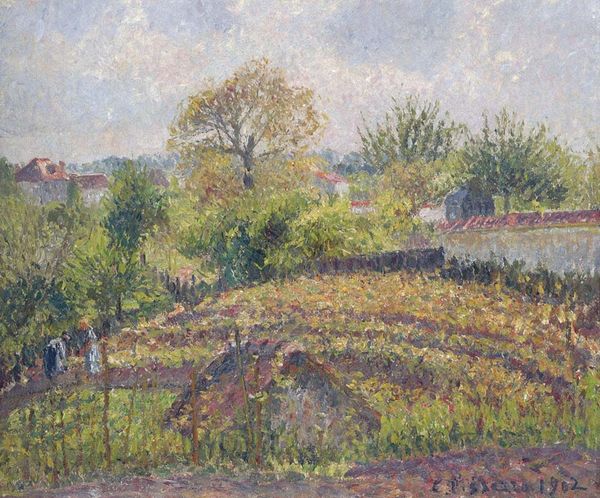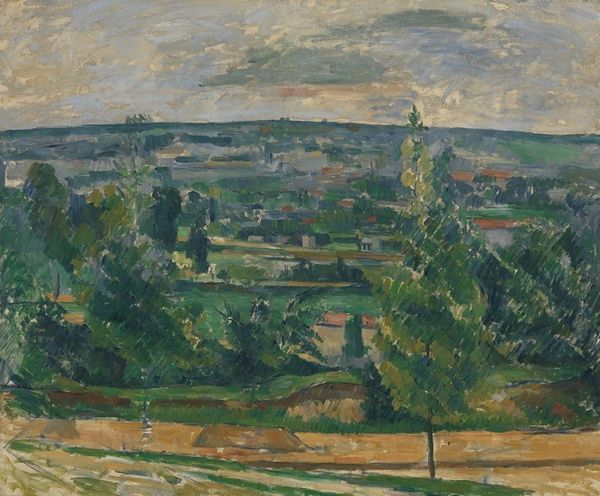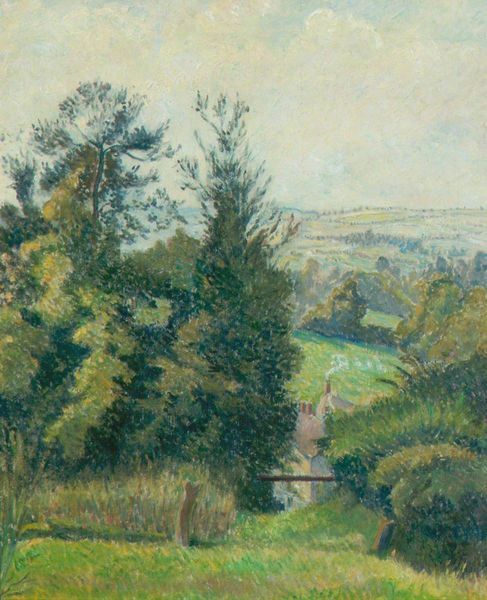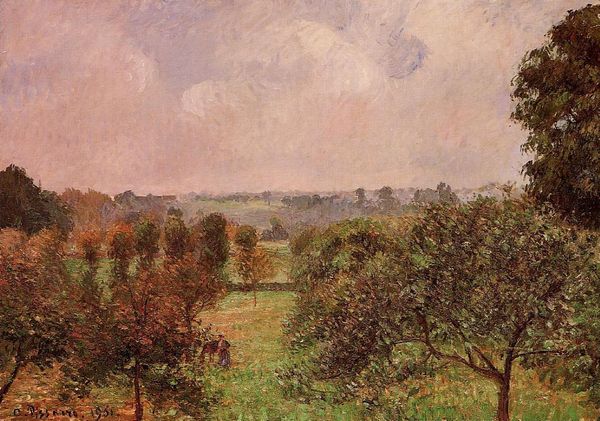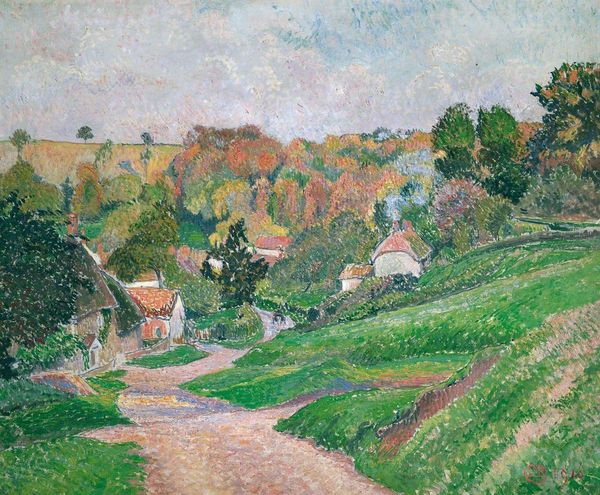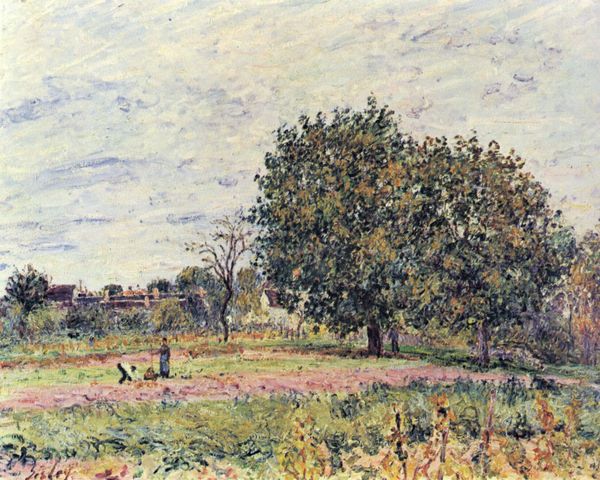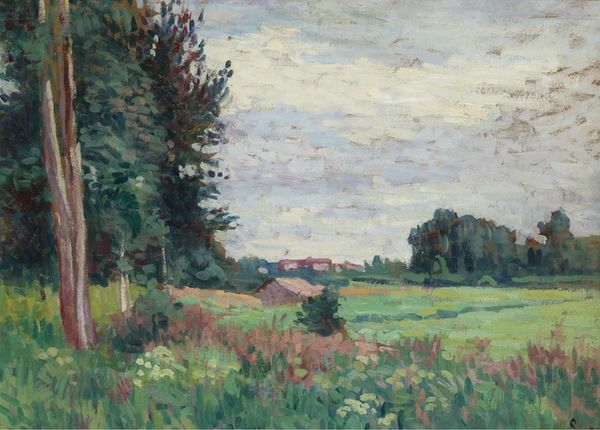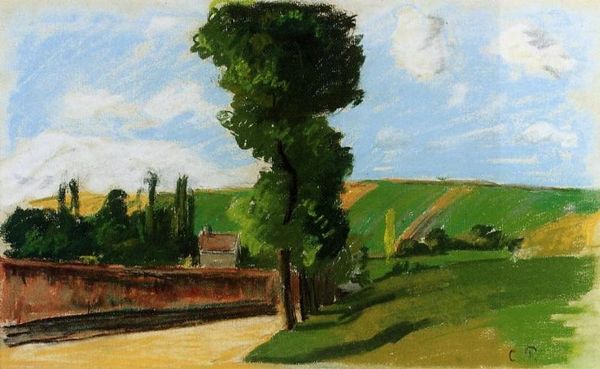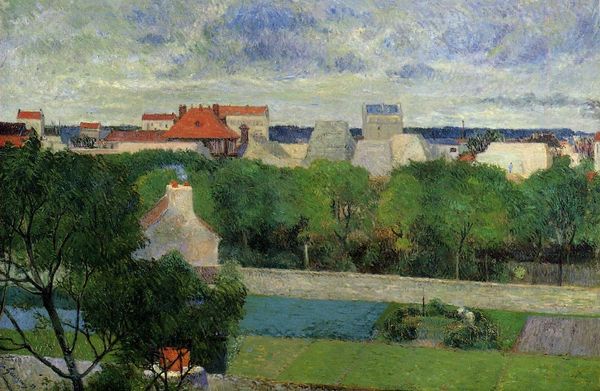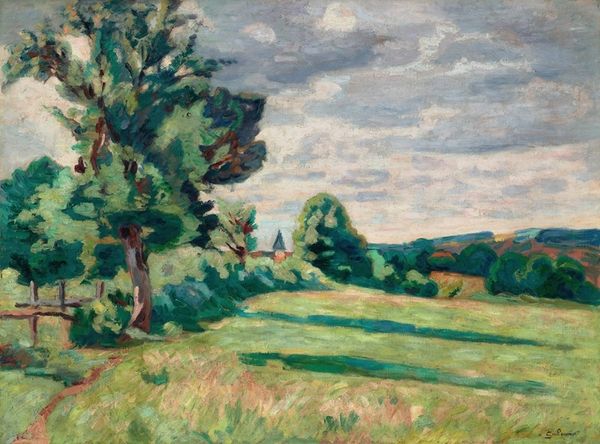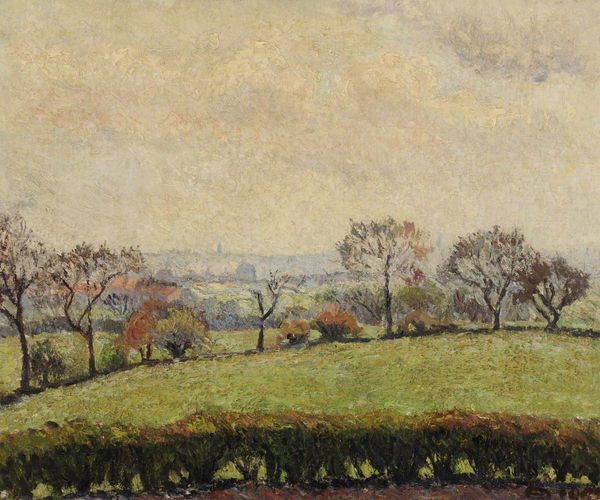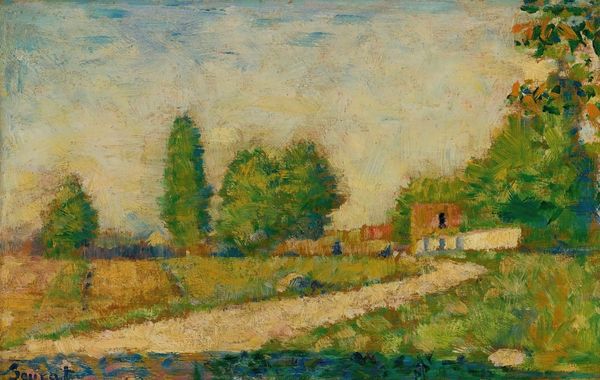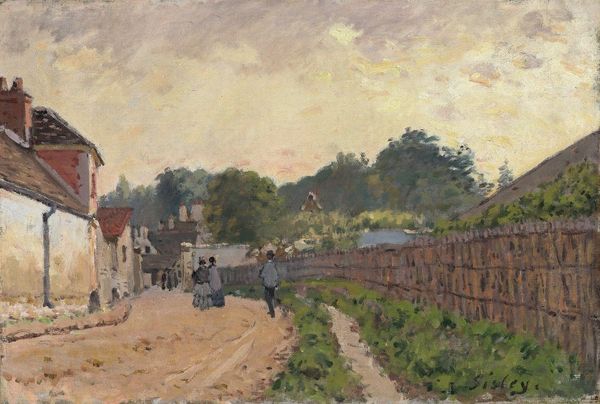
Dimensions: 54.6 x 65.4 cm
Copyright: Public domain
Curator: Let’s consider this landscape titled "View of Eragny," rendered in 1895 by Camille Pissarro. Editor: It's surprisingly grounding, despite the impressionistic technique. The scene has this tangible, almost tactile quality, like I could reach out and feel the rough texture of the fields. Curator: Pissarro was deeply invested in the materials he used and the process of making. Oil paint, applied en plein-air, allowed him to capture fleeting moments of light and atmosphere but also speak to the changing landscape due to agriculture and suburban expansion. How the materiality evokes labor is especially interesting here. Editor: And that expansion also has a human element that speaks to cultural change. The view encapsulates not only nature, but how people were organizing and dwelling within that nature, even shaping it. Curator: Precisely. And Pissarro's technique reflects the societal values. His broken brushstrokes mirror the fractured, changing landscape and social order. It challenged academic norms in art production. Editor: That is very true. Pissarro actively engaged with avant-garde circles, and "View of Eragny" challenges the norms upheld by institutions that dictated art values at the time, especially the establishment's ideas of what landscapes "should" depict. Curator: He transformed a conventional landscape genre into an observation on labor and industrial change using distinct methods. Pissarro documented the transformation in material terms through a visible brushstroke reflecting this shift. Editor: "View of Eragny" functions both as a depiction of a place and as a quiet but critical perspective on landscape, progress, and societal development. Its gentle, almost muted palette belies the radical message that lurks beneath the surface. Curator: Studying how Pissarro manipulated materials in this piece and its cultural background definitely broadens our view of both art and social history of the era. Editor: Indeed, it underlines the notion that a landscape, like any other artwork, is never just about what it seems. It tells a story about place and also how art itself functions in public discourse.
Comments
No comments
Be the first to comment and join the conversation on the ultimate creative platform.
